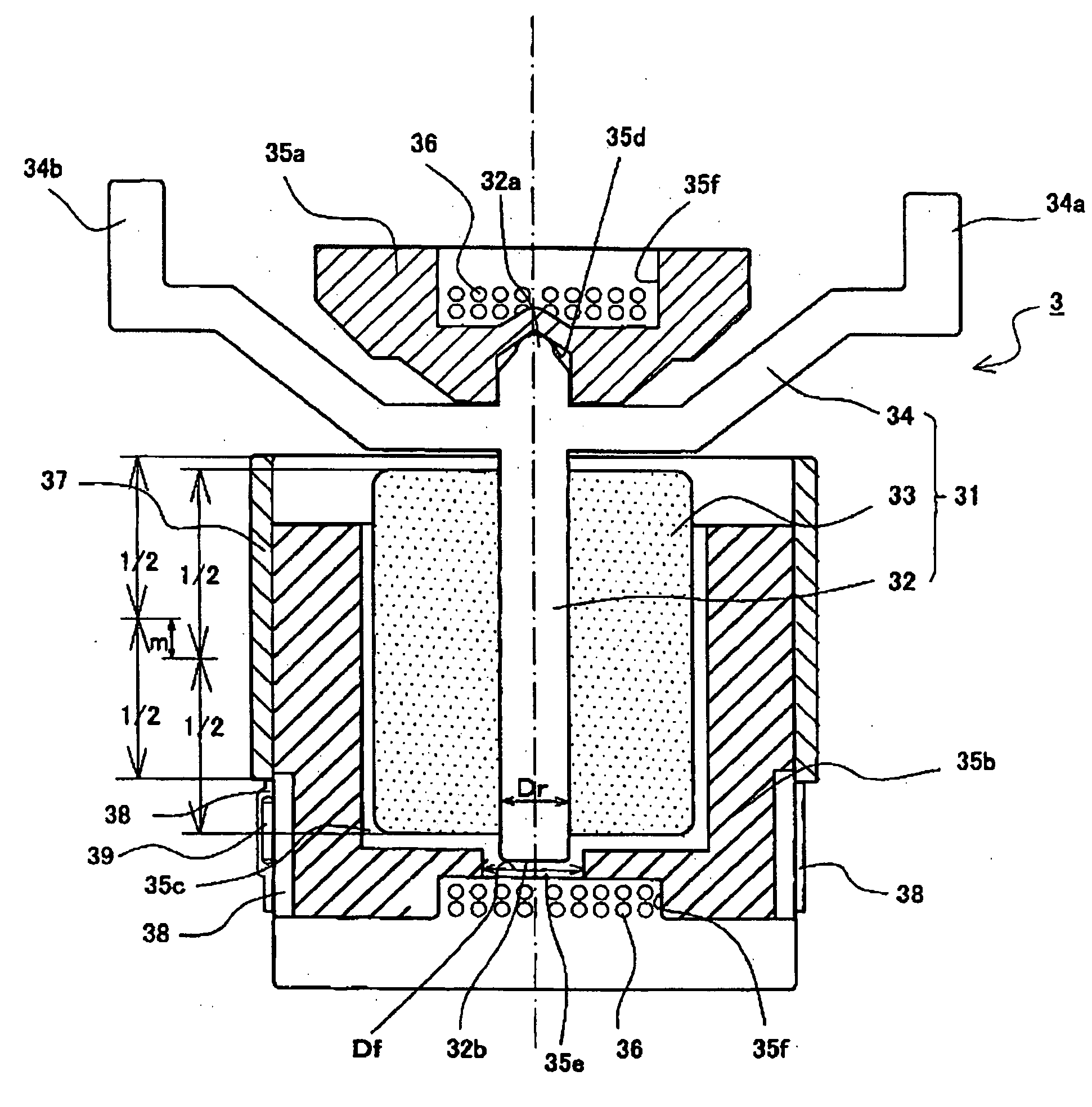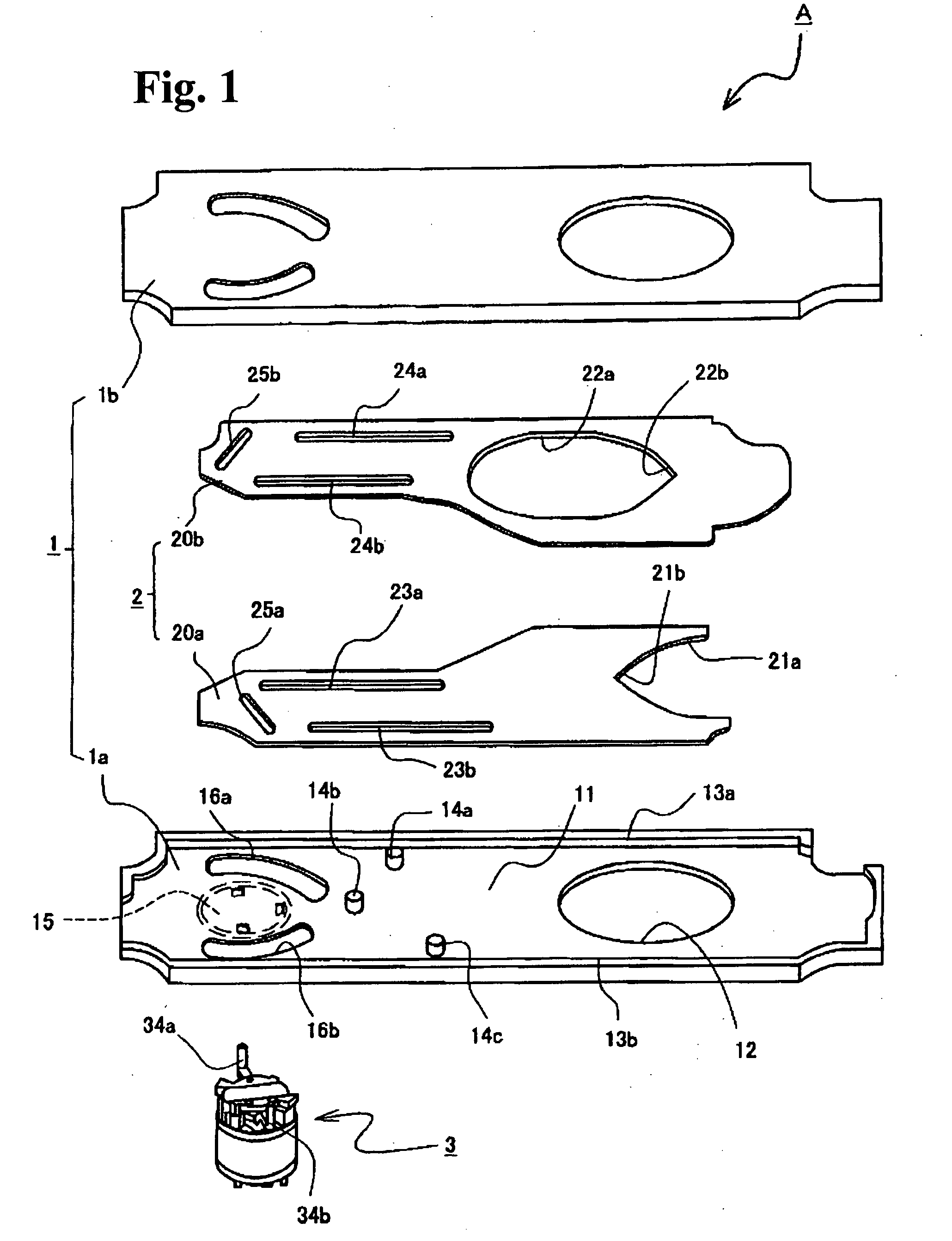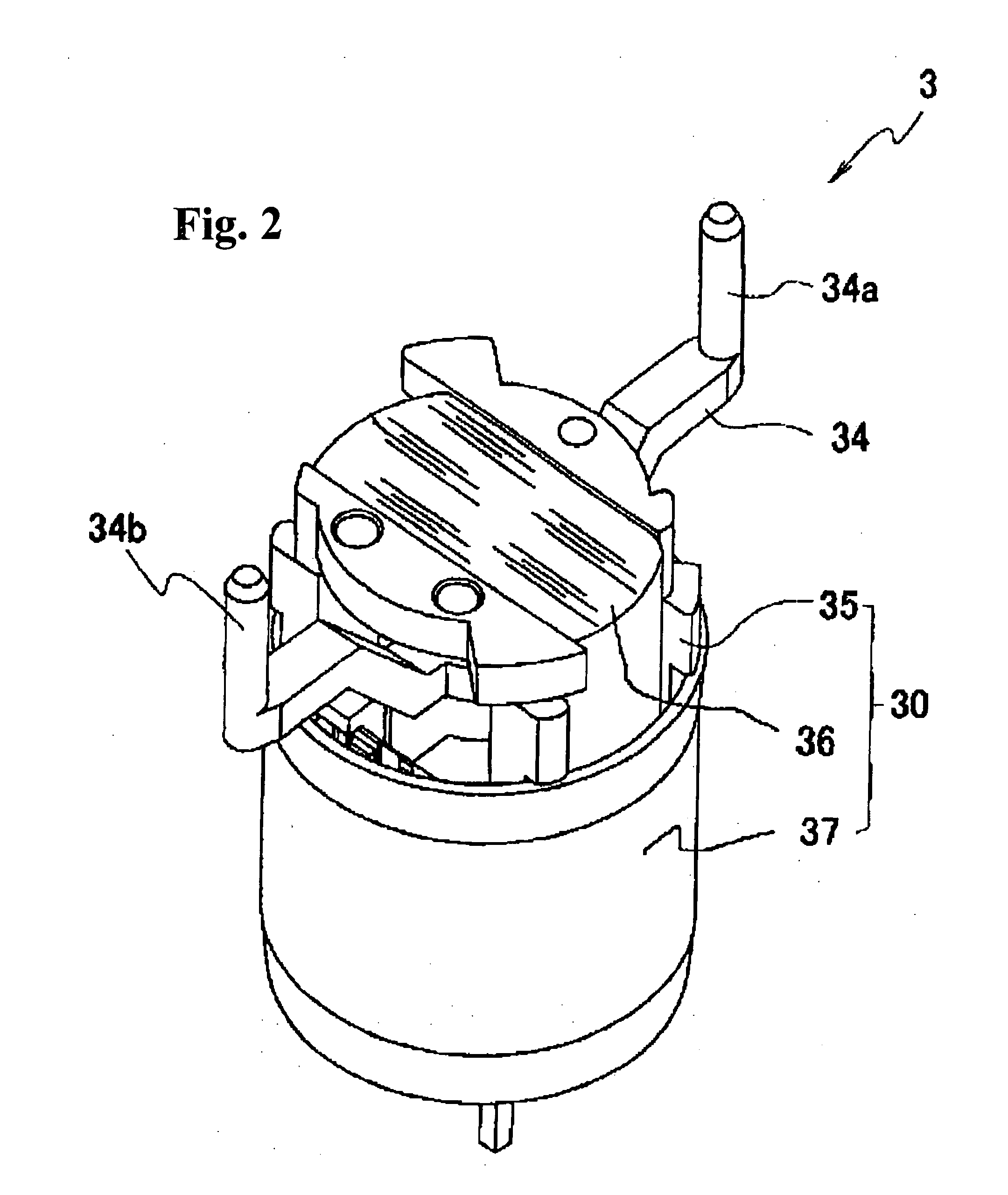Light quantity adjusting device
a technology of light quantity and adjustment device, which is applied in the direction of camera diaphragms, shutters, instruments, etc., can solve the problems of reducing the diameter of the rotor shaft, affecting the bearing action, etc., and achieves stable bearing action and simple structure.
- Summary
- Abstract
- Description
- Claims
- Application Information
AI Technical Summary
Benefits of technology
Problems solved by technology
Method used
Image
Examples
Embodiment Construction
[0035]The present invention will be described on the basis of an illustrated preferred embodiment. FIG. 1 is an exploded perspective view of a light quantity adjusting device in accordance with the present invention. FIG. 2 is a perspective view of an electromagnetic driver that drivingly opens and closes a blade. FIG. 3 is a vertical sectional view of the electromagnetic driver.
[0036]The general configuration of a light quantity adjusting device A will be described with reference to FIG. 1. As shown in FIG. 1, the light quantity adjusting device in accordance with the present invention is composed of a substrate 1, a blade 2, and a driver 3. The substrate 1 is composed of a flat base plate 1a and a retainer plate 1b laid on top of the base plate 1a with a small gap formed between the base plate 1a and the retainer plate 1b. The base plate 1a is shaped to be incorporated in a space in a camera into which a photographing lens barrel is incorporated. The base plate 1a is formed by, fo...
PUM
 Login to View More
Login to View More Abstract
Description
Claims
Application Information
 Login to View More
Login to View More - R&D
- Intellectual Property
- Life Sciences
- Materials
- Tech Scout
- Unparalleled Data Quality
- Higher Quality Content
- 60% Fewer Hallucinations
Browse by: Latest US Patents, China's latest patents, Technical Efficacy Thesaurus, Application Domain, Technology Topic, Popular Technical Reports.
© 2025 PatSnap. All rights reserved.Legal|Privacy policy|Modern Slavery Act Transparency Statement|Sitemap|About US| Contact US: help@patsnap.com



